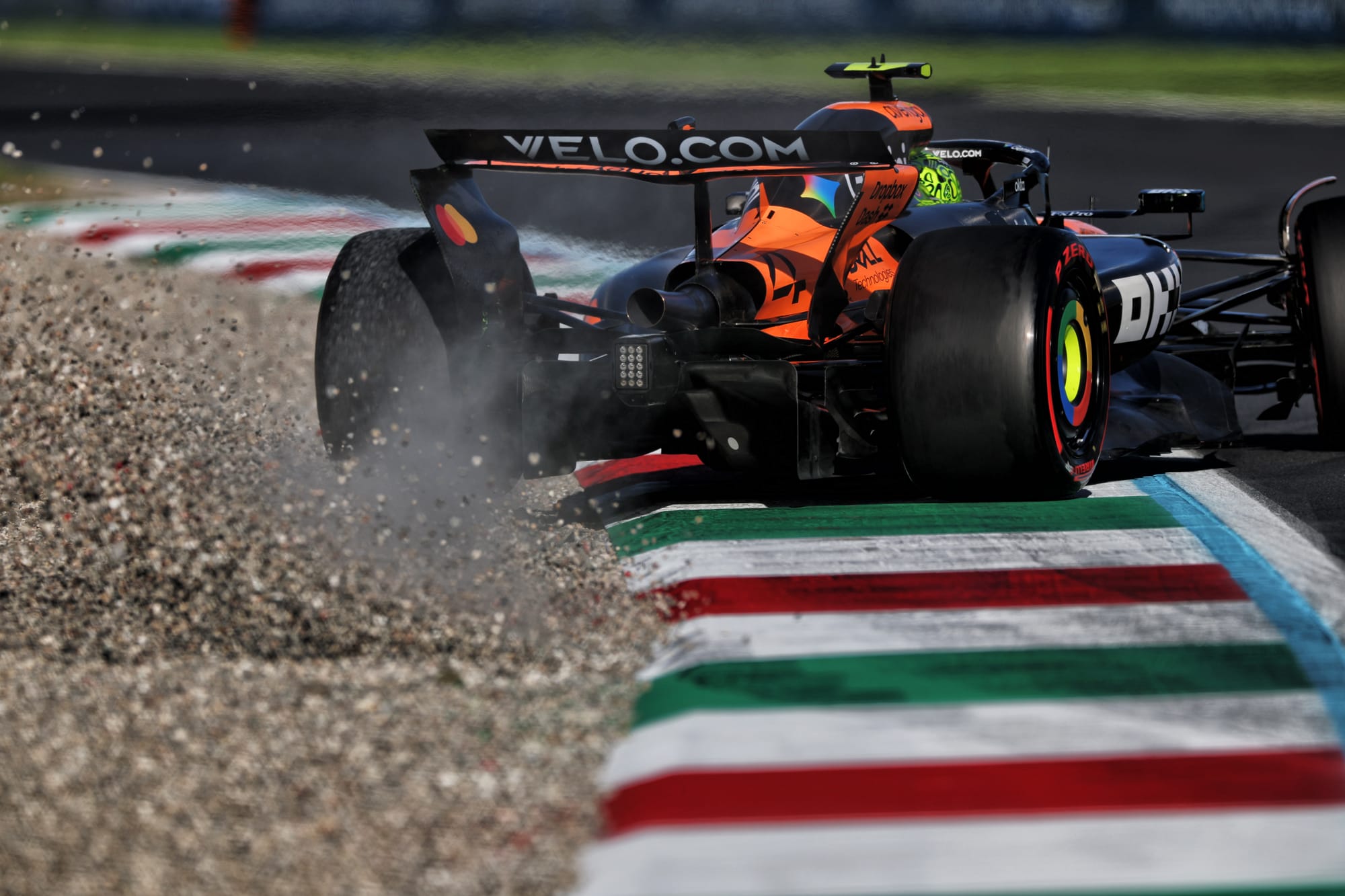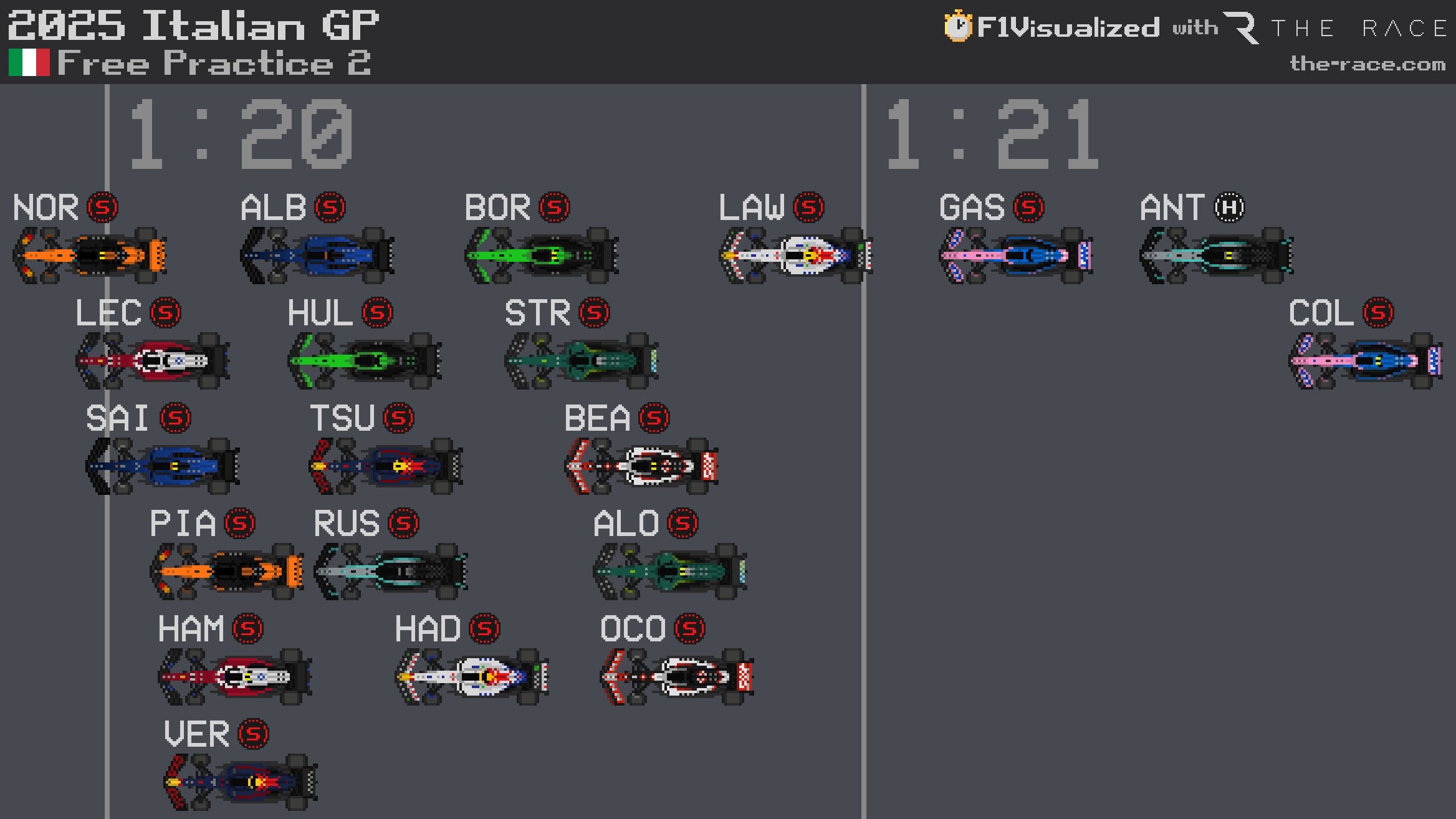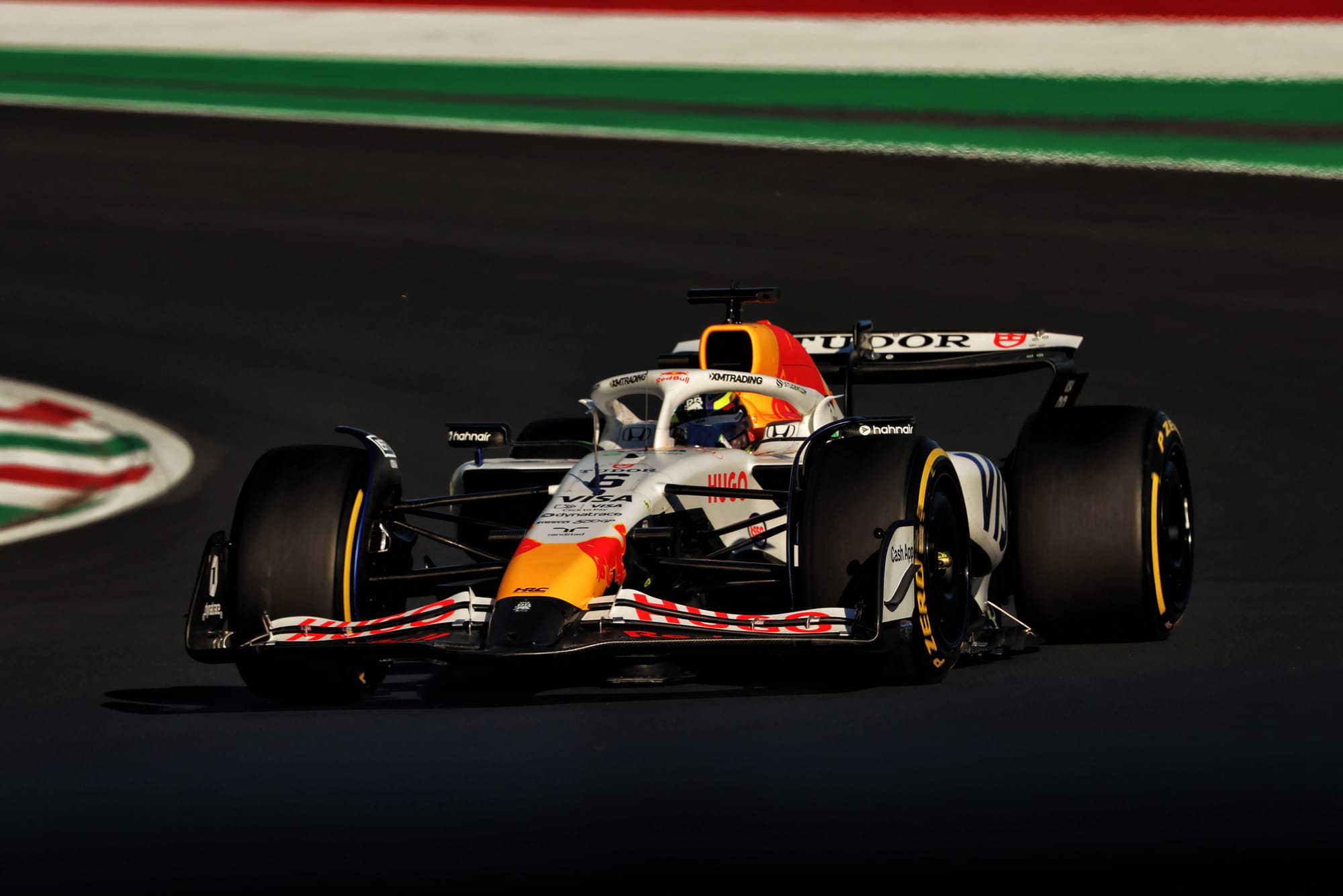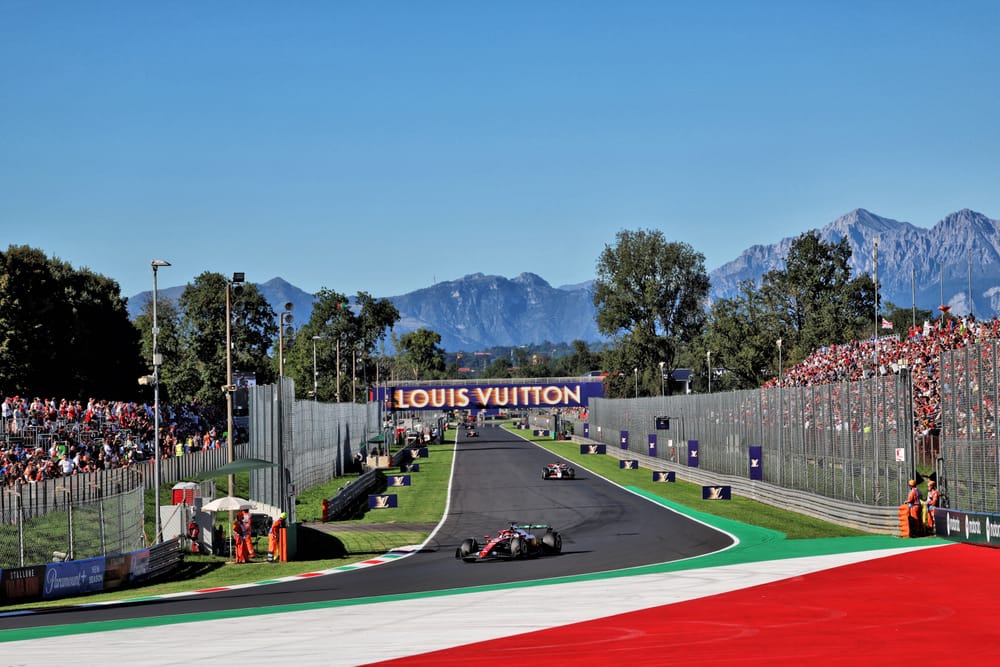McLaren still the quickest but not by as comfortable a margin as usual, certainly nothing like that of Zandvoort. Max Verstappen’s Red Bull apparently capable of giving them a run, Ferrari looking in quite a sweet spot of aero efficiency in this low-downforce trim, Williams genuinely nipping at the heels of the big teams, Mercedes not really looking very aero efficient.
That’s the summary of what Friday Formula 1 practice running at the Italian Grand Prix looked like but such are the big lap time rewards on offer for getting a good tow around Monza that the grid order is likely to be only loosely decided on raw pace.
The best co-ordination and co-operation between team-mates could actually over-power the pace difference between cars. There are going to be shenanigans…

Lando Norris’ fastest single lap is deceiving. He set it after ruining his initial attempt by running through the Ascari gravel. Stopping for a damage check and going back out on the same tyres, now part-used, he set the session-heading lap but he’d been quicker through sector 2 previously. There was a better lap in the car than that.

But the same could be said of Charles Leclerc’s second-fastest time, just 0.083s slower in the Ferrari, as he set this on his fourth lap of that set of tyres. Carlos Sainz’s Williams, in third, was genuinely quick but in reality a few tenths off McLaren. Max Verstappen’s best lap was lost with a wayward moment into the Lesmos but otherwise looked perhaps the most consistent threat to the McLarens, something backed up by his long run averages.
FP2 long run averages
1 Norris (McLaren) 1m23.64s - 10 laps, medium
2 Verstappen (Red Bull) 1m23.77s - 9 laps, medium
3 Sainz (Williams) 1m23.99s - 7 laps, medium
4 Piastri (McLaren) 1m24.00s - 9 laps, medium
5 Leclerc (Ferrari) 1m24.17s - 5 laps, soft
6 Albon (Williams) 1m24.20s - 6 laps, medium
7 Russell (Mercedes) 1m24.24s - 8 laps, hard
8 Hadjar (Racing Bulls) 1m24.31s - 7 laps, medium
9 Hamilton (Ferrari) 1m24.34s - 8 laps, hard
10 Lawson (Racing Bulls) 1m24.52s - 9 laps, medium
Treat those averages carefully however, as there was so much traffic interruption for so many of them. Oscar Piastri’s session didn’t go as smoothly as Norris’ but much of the difference between the McLarens is accounted for by his greater traffic delays.
Looking at the speed patterns of the three fastest cars – the McLaren, Ferrari and Red Bull – the pattern is quite distinct. The Ferrari is enjoying its low-downforce wing to be fastest at the end of the straights, the McLaren is the fastest through the medium and quick corners, the Red Bull is fastest into the chicanes and low-speed entries. But that latter quality is making the rear a little lively on entry, even for Verstappen, as his moment into the Lesmos highlighted.
The Ferrari and Red Bull both take time out of Norris’ McLaren into the first chicane. But the RB21 looks to be carrying more downforce and loses time to both on the flat-out section between the two chicanes. The Ferrari’s wing level sees it slowest of the top three out of Lesmo 2 (at 188km/h [116mph] compared to 198km/h [123mph] for the McLaren). The Williams and Red Bull sit around halfway between the two at that point.
It’s a similar story out of Parabolica, with the McLaren’s higher exit speed seeing it fastest for about half of the straight but trailing by the end of it. The Ferrari gets down that pit straight in less time than any other.
However, Ferrari chose to base its long runs around the hard tyre (Hamilton) and the soft (Leclerc), making for an impossible comparison to the medium-shod runs of most others.

Although Isack Hadjar’s run in the Racing Bulls was slightly slower than that of the Williams pair, it was very consistent, suggesting it may have a better tyre balance over longer stints. But unless he gets very lucky with his slipstreaming, a repeat of Hadjar’s Zandvoort qualifying form looks remote. As does any significant pace from the Aston Martins which, as Spa suggested, look to be very aero-inefficient in low-drag form.
There’s nothing to suggest that the deg will be high enough to make the two-stop faster and it may even be possible to start on the soft and still stop only once.



